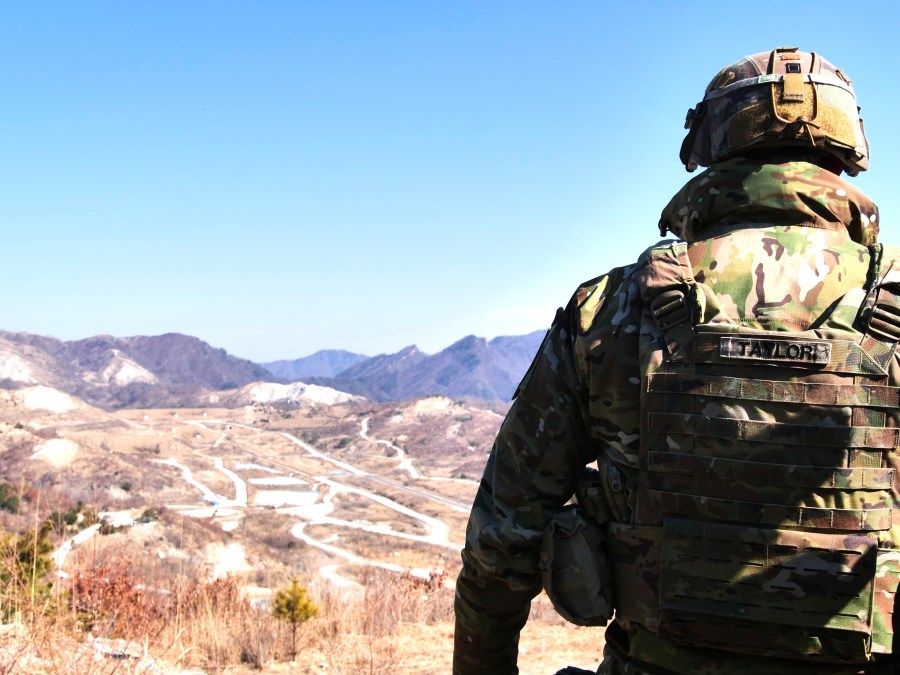Eighth Army commander eyes generative AI to inform how he leads

U.S. Army forces in South Korea are increasingly integrating artificial intelligence across their low- and high-stakes operations, according to Maj. Gen. William “Hank” Taylor.
And as the new acting commander of Eighth Army, Taylor is personally leaning on existing and emerging AI capabilities to help influence and shape how he operates as a leader.
“I’ve become — Chat and I are really close lately,” Taylor told DefenseScoop on Monday, using the trendy terminology to prompt generative AI chatbots (“Hey, Chat”) that’s taken off in popular culture recently.
During a roundtable at the annual AUSA conference, Taylor briefed a small group of reporters about his team’s near-term priorities and how technology is improving their decision-making processes and readiness pursuits.
“As we talk about protection, drone use, counter-drones and counter-UAS, medical modernization, aviation modernization, we have something going on in almost every domain of modernization in Korea, right? AI is one thing that, as a commander, it’s been very, very interesting for me. Obviously, I’ve been in the Army for a long time, right? And so I was in the Army before computers,” Taylor said.
On AI applications that make specific sense for South Korea, which is very close geographically to China, he said the field army he commands is “regularly using” AI for predictive analysis to look at sustainment. He’s also keen to see use cases expand for intelligence purposes.
“Just being able to write our weekly reports and things, in the intelligence world, to actually then help us predict things — I think that is the biggest thing that really I’m excited about — it’s that modernization piece,” Taylor told DefenseScoop.
Generative AI marks one of the most buzzy, cutting-edge branches of the technology in the current era.
Broadly, generative AI involves disruptive but still-maturing models that can process huge volumes of data and perform increasingly “intelligent” tasks — like recognizing speech or producing human-like media and code based on people-generated prompts. These capabilities are pushing the boundaries of what existing AI and machine learning can achieve.
A significant number of Americans reportedly use genAI chatbots every day to inform or enhance a wide range of personal and professional tasks. While each of the U.S. military services’ rules for the technology vary, they broadly emphasize data security, output verification, and the use of approved, government-developed tools over public-facing models.
Taylor noted he’s keen to use the technology to inform his leadership approaches.
“One of the things that recently I’ve been personally working on with my soldiers is decision-making — individual decision-making. And how [we make decisions] in our own individual life, when we make decisions, it’s important. So, that’s something I’ve been asking and trying to build models to help all of us,” Taylor noted. “Especially, [on] how do I make decisions, personal decisions, right — that affect not only me, but my organization and overall readiness?”
He’s leading the Eighth Army in Korea at a time of growing regional complexities involving North Korea, China, and Russia. When asked about the contemporary threats that “keep him up at night,” Taylor told reporters that he is focused on ensuring his team is ready — regardless of the danger that surfaces.
“It always comes back to, do I have the capabilities? Do I have the training? Do I have the wherewithal to understand this? And my answer is, ‘Yes, we do,’ right? I understand what our threats are, what they are, and how to train. And so when I think about your specific question, what I know is, in my organization, in the Army, I am ready for those threats. I am ready. I’m prepared. I have the right equipment, I have the right training, I have the right awareness of threats throughout the Indo-Pacific region,” Taylor said.






